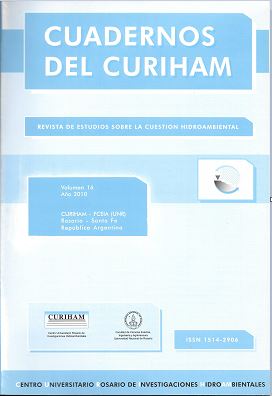Estudio de columnas reactivas para la remoción de arsénico mediante el empleo de la técnica ZVI
DOI:
https://doi.org/10.35305/curiham.v16i0.62Keywords:
ZVI, Arsenic, Environmental clean-upAbstract
Arsenic removalcan be achieved by using the zero-valent iron methodology(ZVI).Thissimple technique is based on the oxidation of metallic iron that yields insolublespecies containing Fe(II) and/orFe(III), mainly oxi/hydroxides. The formed particles play a fundamental role since irreversibly uptake arsenic species through adsorption and/or co-precipitation processes. In order to restore the physicochemical and potability features of the treated water, the formed particles have to be removed from the aqueous phase. The present work shows the results obtained with ZVI-permeable reactive barriers for the removal of the pollutant in continuous systems.
Downloads
Downloads
Published
How to Cite
Issue
Section
License
Copyright (c) 2010 Juan Triszcz, Luciana Chippano, Andrés Gordon, Andrés Porta, Fernando García Einschlag

This work is licensed under a Creative Commons Attribution-NonCommercial-ShareAlike 4.0 International License.



























